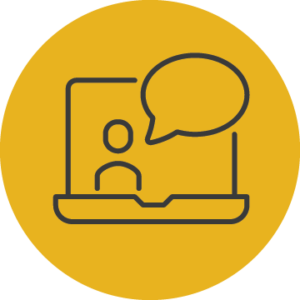
Opinions expressed in AGB blogs are those of the authors and not necessarily those of the institutions that employ them or of AGB.
AGB OnBoard recently published its fourth annual Boardroom Insights Survey, which polls board professionals and stakeholders about the dynamics and trends that drive board effectiveness. The survey included more than 350 responses, including roughly 80 board professionals in the higher education sector. Those surveyed included board presidents, C-suite and other executives, general counsels, corporate secretaries, and board administrators.
Technology Continues to Drive Effectiveness
According to respondents, two factors tied for the title of “most impactful” to boards’ and organizations’ effectiveness in 2024: changes to regulation and compliance rules and the increasing pace of technological change. Increased risk due to cybersecurity concerns rated third. Top board leaders told us the repercussions of fast-moving technological change are a primary concern.
Regulation and compliance changes will force boards to address those issues as they affect their organizations and take away time they could be spending on other matters. As technology continues to evolve, board members must spend time learning how to use it properly, which also takes time away from more traditional governance. Not only do cybersecurity concerns take time to address, but the average data breach costs an average of $4.88 million, according to new research from IBM and the Ponemon Institute.
Across all industries, 74 percent of executive leadership cited rapid accelerating tech advancements, cybersecurity threats, and the expanding use of artificial intelligence (AI) as the trends most expected to affect board and organizational effectiveness.
What Boards Are Doing Best
What are boards’ biggest strengths? Survey respondents identified meeting participation, preparation, and onboarding, in that order.
Nearly 90 percent of board professionals said a high level of engagement in board meetings was their primary strength. A little more than three-fourths (77 percent) said their boards are “moderately” or “highly effective” at preparing for meetings.
Two-thirds of respondents (66 percent) said their boards are effective at onboarding new members and establishing new meetings.
Higher Ed Boards Utilize Digital Solutions Well
Higher education boards use digital solutions such as board management software, Google Drive, SharePoint, Dropbox, Microsoft Excel or Teams, or Zoom at a 31 percent clip, which is higher than the average of 25 percent. Among the 11 industries that this survey categorized, only utilities/energy (50 percent) and finance/insurance (39 percent) made higher use of digital board solutions.
While 58 percent of higher ed boards use email and/or PDF attachments—slightly less than the average of 62percent—11 percent say they still rely on paper, just below the overall average of 13 percent. With the inefficiencies that are inherent in a paper-based solution, including delivery of board books and the difficulty of making late changes to those books, this presents an opportunity for many higher ed boards to operate more efficiently by opting for a more modern, secure, streamlined solution.
Boards Suffer from Insufficient Prep Time
On a related note, many survey respondents identified limited preparation time as a constant challenge. For administrators, the challenges center on tight time frames to gather and distribute board materials.
Nearly 60 percent said they distribute materials to board members less than a week in advance of meetings, and about half of those send the materials less than four days in advance.
As a result, board members often must cram to prepare for meetings as many juggle board duties with careers and other responsibilities. Forty-one percent of respondents said they spend four to six hours prepping for meetings, while 50 percent said they spend more than six hours. Only 9 percent said they spend less than two hours preparing for meetings.
Opportunities for Improved Effectiveness
In addition to their boards’ strengths, survey respondents identified their key weaknesses. Many see a need to bolster cybersecurity and make better use of technology.
About four in 10 boards indicated there is significant room for improvement when ensuring cybersecurity relative to board information and meetings, and to facilitating effective board communication outside of meetings.
Nearly one-third of survey respondents (32 percent) said their organizations are not effective at utilizing technology. In addition, 31 percent said their boards could do a better job of staying informed on industry trends.
Ineffective Board Members Remain a Challenge in Higher Ed
As boards work to navigate evolving technology, regulatory demands, and economic and social pressures, many remain frustrated about what they see as inept board members—particularly in the higher ed sector.
Higher ed board professionals who participated in the survey said 18 percent of their board members—an average of 3.8 per board—weren’t effective. That’s the second-highest number among the six categorized industries (behind only associations, which also average more board members). The percentage tied for the second highest (not all industries average the same number of board members) with nonprofits, ahead of only technology boards (23 percent).
More than 70 percent of survey respondents across all industries said they could identify at least one ineffective board member on their board today, and more than half said at least one in 10 board members are ineffective.
How could board members become more effective? Respondents cited these five solutions:
- Increased engagement and preparation
- More utilization of better technologies
- More efficient governance practices
- Improved training and education
- More communication and clearer expectations
While Problems Remain, Solutions Are Available
The results of this year’s Boardroom Insights Survey illustrate the challenges higher ed boards confront in today’s rapidly evolving environment. Boards face myriad difficulties, from cybersecurity to time constraints, disengaged peers, technological difficulties, and other pressures such as increased compliance requirements.
That said, the survey responses demonstrate ongoing progress. Board management solutions, such as AGB OnBoard, offer myriad capabilities and benefits to help organizations streamline processes and better protect vital board information and communications.
Matthew Maxwell is a senior consultant at AGB OnBoard. He has worked with the company for over a decade in business development and as a consultant, and he helped initiate the AGB-OnBoard partnership.
RELATED RESOURCES

Blog Post
Aligning Your Board to Navigate Change

Webinar On Demand
Emails and PDFs Don’t Make Your Board Digital

Trusteeship Magazine Article
The College of the Future, Part 1

